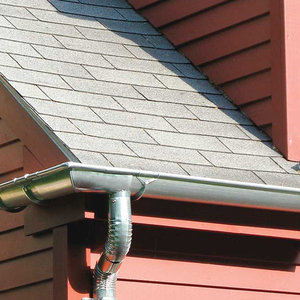I recently started a job installing tongue and groove cedar siding in a 12×24 Jacuzzi house with 10’ high walls and an 8/12 cathedral ceiling. I downloaded a trial version of “National Estimator” to figure the bid. It gives 0.035 per square foot for 10’ lengths. That’s 100 SF in 3 ½ hours. Does that sound right?
This is the first time I’ve done a job like this, but still…
After cutting everything to length, cutting out for the electrical, re-cutting some but joints for a nice tight fit, and then making sure everything is level and lines up around the room, it seems like it should take longer than that.
I realize that the man hours will be different above 9’ and also on the cathedral ceiling. However, even below 9’ on the walls, is 0.035 HRS/SF a reasonable number for 1 person who’s working alone?
Bob



















Replies
That works out to 2.1 minutes per square foot. How wide is it?
It's 5" wide.
It's 5" wide.
So that's about 52 seconds per linear foot, 8:45 per 10 foot length, if I figure correctly.
Did the estimator give you any formula for estimating windows/doors/corners/etc?
It only said "Do not deduct
It only said "Do not deduct for wall openings less than 10 square feet."
bob
I thought I did this once earlier-to no avail-the post isn't here........
But, here's the jist of what I typed b/4.
I haven't used an estimator book or program in a long time. When I did in commercial-there were certain things to add to the task-set up, logistics, clean up, etc. Picking up material, estimating time, and other costs including overhead and profit should be added as well. No matter what the book said-we always added our human element as well. To go by the book only we did not do.
Since, I've always built the job on paper and deduced the price quote accordingly. I look at the job, take notes of all the "other" parts of the site etc that will affect production. Went back to the desk and added the times, costs, entered whatever multiplier necessary and of course added profit and overhead (of the whole operation)-you're in business-all business costs have to go somewhere-either as a percentage or somehow roll it into your hourly cost.
Once I arrive at a total, I go back and run through the times and numbers-if I can adjust down on something-I hi-light it.............same goes if I'm feeling low on some task. B/4 I write it up I look closely at the hi-lights. Feel good about or change those? Done.
I know several operations that live on an estimate program and I've also seen many who've failed from having lost money on every single job. Underbidding once in a while happens and won't sink the boat. But continued loss will mean the end sooner or later.
What time/cost did you come up with that would make you more comfortable?
Remember, working alone sometimes saves on standing around time. Other times it costs on production in a certain amount of time.
And of course, level of quality is always a total bill changer.
Best of luck.
Yeah, in an entirely different discipline (computer programming) I've several times found that estimating the time spent "nonproductively" (in meetings, writing documentation, dealing with recalcitant computers, etc) came closer to an accurate estimate than figuring the time to do the "real work".
And with this job you have to figure the time spent setting up your work area, measuring, running around to the other side because your materials are not well placed, etc.
Thanks guys.